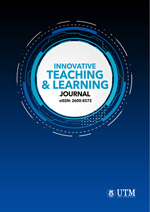A Review on The Use of Video in Education: Advantages and Disadvantages
DOI:
https://doi.org/10.11113/itlj.v7.132Keywords:
Video, Multimedia, Education, Teaching and LearningAbstract
Multimedia in the form of video has been widely used in education since the outbreak of the COVID-19 pandemic. It is because the video is one of the tools that provide a lot of visual signals and a core component that stimulates the auditory and visual senses of students and processes information to facilitate the transfer of knowledge and provide students with a clearer understanding. The use of video also has a good effect on students’ training and acquiring skills. However, learning by watching videos may create problems for students because the form of learning is more passive. Previous research has identified that videos will create passive learning if the video is not well designed, the content does not meet the specified teaching and learning objectives and lacks interactive elements. It causes the use of video for teaching and learning to fail to stimulate critical thinking skills. Learning by watching video-based learning alone is not enough because there are still ways to increase learning opportunities and students’ engagement from videos if the videos are produced correctly and purposefully and used on the right platform. In addition, one of the concerns of using video in teaching and learning is that the video used does not develop students’ metacognitive ability because the video is passive learning. Therefore, this review aims to identify the advantages and disadvantages of video in education. This concept paper reviews the previous research on using videos in education. The review describes the advantages and disadvantages of video implementation in several fields of education, including Mathematics, Sciences, Chemistry, Physics, Biology, and Geography. The review results show that the effect of using video for teaching and learning depends on the quality of the video, the learning content, and the interactive elements included in the video. In conclusion, this concept paper provides ideas and research gaps for researchers who want to investigate the use of video in teaching and learning. Besides, gives educators a broad perspective to develop a quality video to help students understand the lesson.


















